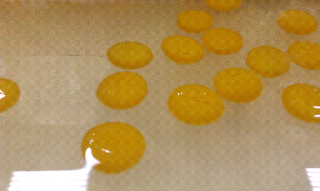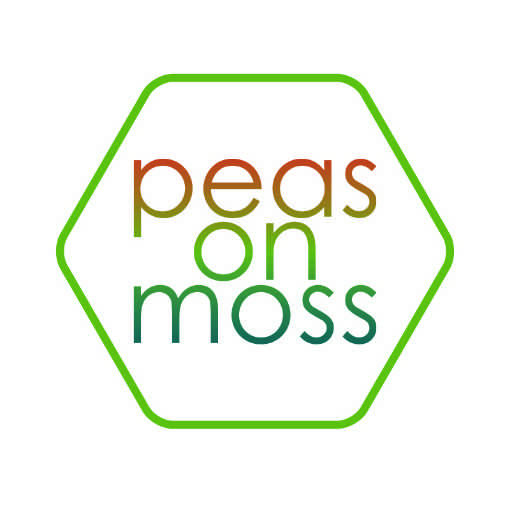
The technique of spherification is essentially a controlled gelling process. At the point where two different foods meet, a membrane forms.
In “direct spherification,” alginate, a seaweed-based hydrocolloid, is blended into Liquid A. It reacts with the calcium in Liquid B, and gelation occurs. Liquid A become gelled and maintains a specific shape, a sphere. In the case of “reverse spherification,” the calcium is mixed into Liquid A and is set in an alginate bath. The reaction occurs when calcium in a liquid reacts with the alginate in a second liquid. Depending on how the liquids are introduced to each other, the shape varies among round, ovoid, and tear-drop shapes.
In the picture above, passionfruit puree is blended with calcium gluconate. This mixture is frozen into silicone spheres so that they are perfectly round. The frozen balls are dropped into a hot alginate water bath and swirled while they thaw. As the exterior thaws, a membrane forms. The heating of the alginate water prevents the setting process from continuing all the way, and the interior remains liquid.
Anjana at the Lab created these passionfruit spheres to imitate the look of quail’s eggs. The set puree spheres are placed into cleaned quail’s eggs, which have been meticulously topped. A lemongrass “egg white” is poured around the “egg yolk.” These eggs are served nestled into mini nests, and they are a beautiful and stunning dish. Many of the guests who have dined at the Lab have told us that it was a highlight of their dinners.
Source: Modernist Cuisine. Book 4 Ingredients and Preparations.

Recent Comments